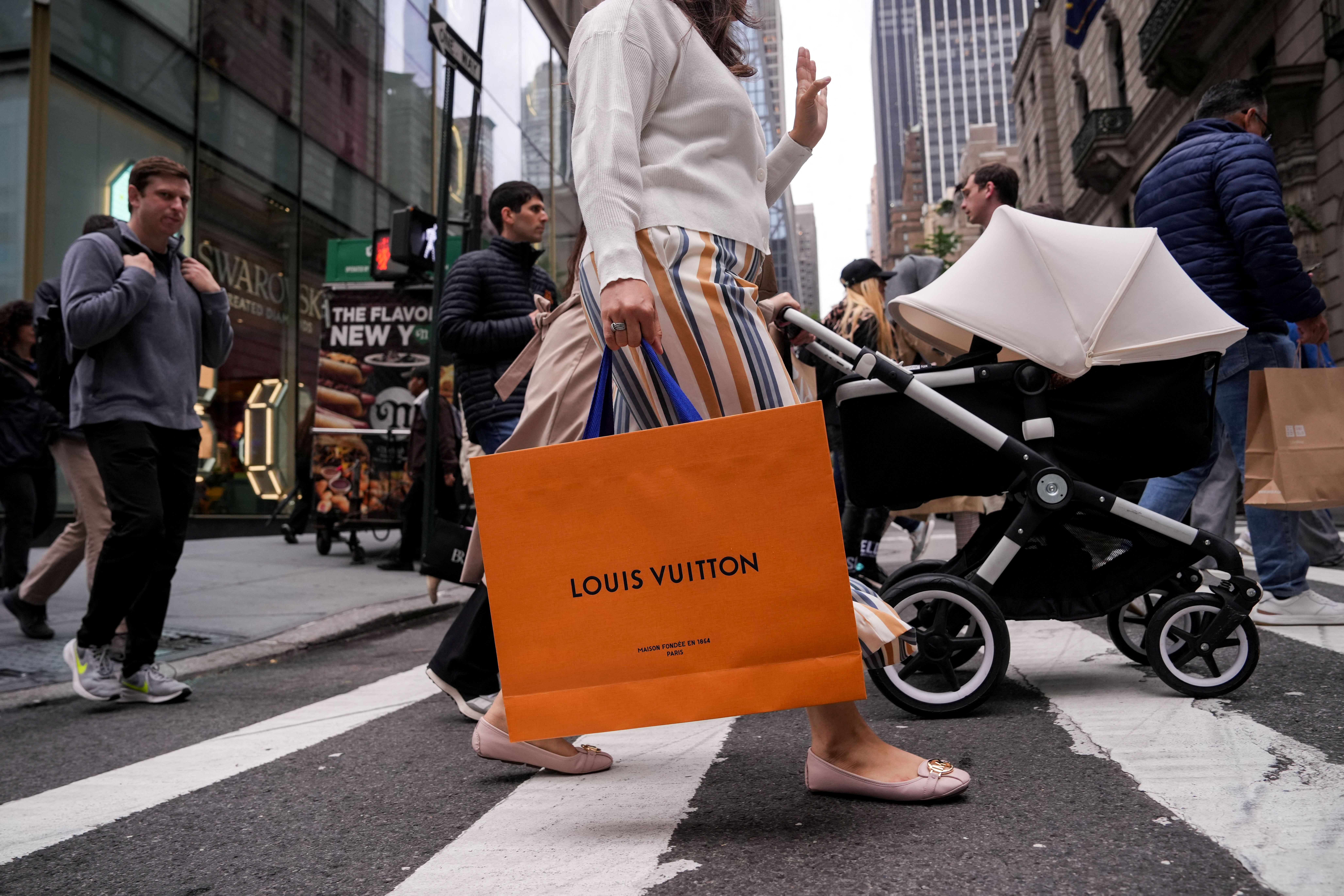President Donald Trump backed away from his threat to impose 50% tariffs on imports from the European Union next month, restoring a July 9 deadline to allow for talks between Washington and the 27-nation bloc to produce a deal.
European assets rallied on Monday. The euro hit its highest level against the dollar EUR=EBS since April 30, while futures in Europe STXEc1 and Germany FDXc1 indicated stocks would open up more than 1.5%.
Trump had said on Friday said he was recommending a 50% tariff effective from June 1, expressing frustration that trade negotiations with the EU were not moving quickly enough. The threat roiled global financial markets and intensified a trade war that has been punctuated by frequent changes in tariff policies toward U.S. trading partners and allies.
The U.S. president’s softened stance two days later marked another temporary reprieve in his erratic trade policy, even if the latest whipsawing in decision making reminded policymakers and investors how quickly circumstances could change.
Trump, who has repeatedly expressed disdain for the EU and its treatment of the United States on trade, relented after European Commission President Ursula von der Leyen told him on Sunday that the EU needed more time to come to an agreement.
She asked him during a call to delay the tariffs until July, the deadline he had originally set when he announced new tariffs in April. Trump told reporters he had granted the request.
“We had a very nice call, and I agreed to move it,” Trump said before returning to Washington after a weekend in New Jersey. “She said we will rapidly get together and see if we can work something out.”
How Trump’s trade war is upending global economy
February 1 – Trump imposes 25% tariffs on Mexican and most Canadian imports and 10% on goods from China, demanding they curb the flow of fentanyl and illegal immigrants into the United States.
February 3 – Trump suspends his threat of tariffs on Mexico and Canada, agreeing to a 30-day pause in return for concessions on border and crime enforcement. The U.S. does not reach such a deal with China.
February 7 – Trump delays tariffs on de minimis, or low-cost, packages from China until the Commerce Department can confirm that procedures and systems are in place to process them and collect tariff revenue.
February 10 – Trump raises tariffs on steel and aluminium to a flat 25% “without exceptions or exemptions”.
March 3 – Trump says 25% tariffs on goods from Mexico and Canada will take effect from March 4 and doubles fentanyl-related tariffs on all Chinese imports to 20%.
March 5 – The president agrees to delay tariffs for one month on some vehicles built in Canada and Mexico after a call with the CEOs of General Motors GM.N and Ford F.N and the chair of Stellantis
March 6 – Trump exempts goods from Canada and Mexico under a North American trade pact for a month from the 25% tariffs.
March 26 – Trump unveils a 25% tariff on imported cars and light trucks.
April 2 – Trump announces global tariffs with a baseline of 10% across all imports and significantly higher duties on some of the U.S.’ biggest trading partners.
April 9 – Trump pauses for 90 days most of his country-specific tariffs that kicked in less than 24 hours earlier following an upheaval in financial markets that erased trillions of dollars from bourses around the world.
The 10% blanket duty on almost all U.S. imports stays in place.
Trump says he will raise the tariff on Chinese imports to 125% from the 104% level that took effect a day earlier. This pushes the extra duties on Chinese goods to 145%, including the fentanyl-related tariffs imposed earlier.
April 13 – The U.S. administration grants exclusions from steep tariffs on smartphones, computers and some other electronics imported largely from China.
April 22 – The Trump administration launches national security probes under Section 232 of the Trade Act of 1962 into imports of both pharmaceuticals and semiconductors as part of a bid to impose tariffs on both sectors.
May 4 – Trump imposes a 100% tariff on all movies produced outside the U.S.
May 9 – Trump and British Prime Minister Keir Starmer announce a limited bilateral trade agreement that leaves in place 10% tariffs on British exports, modestly expands agricultural access for both countries and lowers prohibitive U.S. duties on British car exports.
May 12 – The U.S. and China agree to temporarily slash reciprocal tariffs. Under the 90-day truce, the U.S. will cut the extra tariffs it imposed on Chinese imports to 30% from 145%, while China’s duties on U.S. imports will be slashed to 10% from 125%.
May 13 – The U.S. cuts the low value “de minimis” tariff on China shipments, reducing duties for items valued at up to $800 to 54% from 120%.
May 23 – Trump says he is recommending a straight 50% tariff on goods from the European Union starting on June 1.
He also warned Apple it would face 25% tariff if phones it sold in the U.S. were manufactured outside of the country.
May 25 – Trump backpedals on his threat to slap 50% tariffs on imports from the EU, agreeing to extend the deadline for talks between the U.S. and the block until July 9.
Von der Leyen said in a post on X that she had a “good call” with Trump and that the EU was ready to move quickly.
“Europe is ready to advance talks swiftly and decisively,” she said. “To reach a good deal, we would need the time until July 9.”
AUTOMAKERS, LUXURY GROUPS RALLY
In early April, Trump set a 90-day window for trade talks between the EU and the United States, which was to end on July 9. But on Friday he upended that time frame and said he wasn’t interested in a deal at all.
Talks have been stuck, with Washington demanding unilateral concessions from Brussels to open up to U.S. business while the EU seeks an agreement in which both sides could gain, according to people familiar with the talks.
The EU already faces 25% U.S. import tariffs on its steel, aluminium and cars and so-called “reciprocal” tariffs of 10% for almost all other goods, a levy that had been due to rise to 20% after Trump’s 90-day pause expires in July.
The levy could now increase to 50% in a no-deal scenario, which could raise consumer prices on everything from German BMWs BMWG.DE and Porsches PSHG_p.DE to Italian olive oil and hurt demand for French luxury handbags LVMH.PA, PRTP.PA.
Shares in European automakers, luxury retailers and wine and spirits manufacturers lead European stock futures higher.
Major U.S. stock indexes and European shares had dropped on Friday, and the dollar had weakened, after Trump said Washington planned to impose 50% tariffs on the EU from the beginning of June.
Trump has sought to upend the world economy with his trade policies, but after his announcement in April of tariffs on multiple countries sparked financial market upheaval, he dialled down his threats in favour of talks. Since then Washington has inked a pact with Britain and has held discussions with China.
But progress with the European Union has been more limited, sparking Trump’s ire and adding to broader tensions between the two allies over Trump’s “America first” agenda and Europe’s longtime reliance on Washington for security and defence needs.







Click here to change your cookie preferences